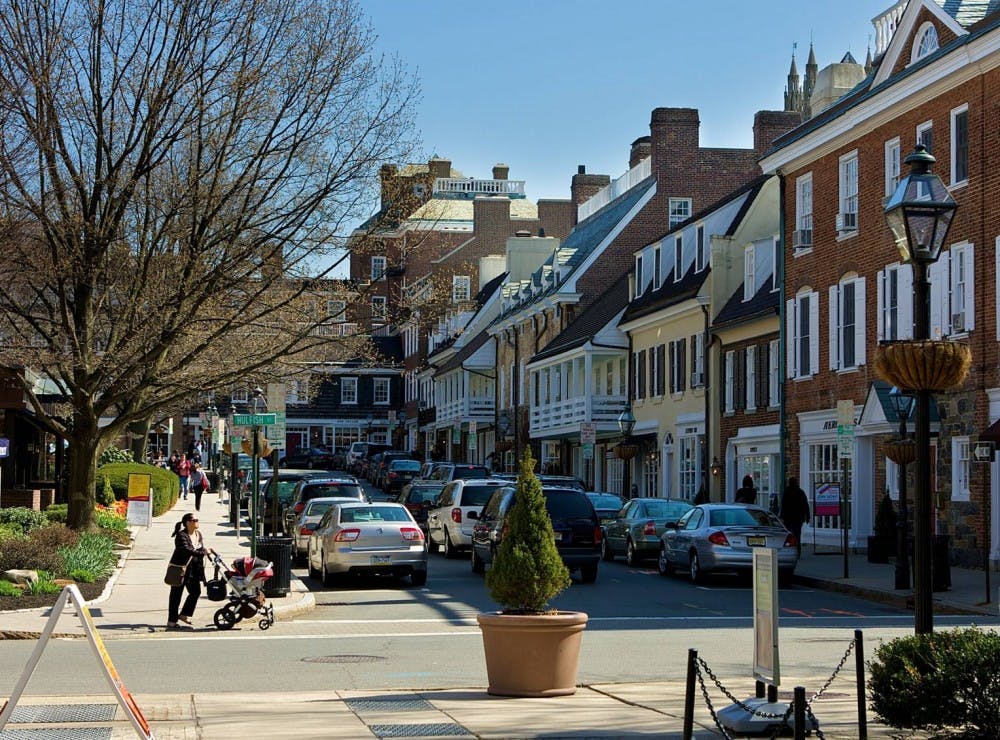“Einstein used to come into this neighborhood and sit on our porches. He used to take me for walks,” local historian Shirley Satterfield told me. Satterfield is a multi-generational resident of the Witherspoon-Jackson community.
Princeton will never produce students “in the Nation’s Service and the Service of Humanity” if, in order to get there, students sidestep community service. If you’re a Princeton student, chances are you’re part of the I’ve-never-crossed-Nassau-Street club, and, even if you have, you’ve probably only made it as far as Starbucks. But did you know? On Witherspoon Street, perpendicular to Nassau, exists Princeton’s 20th historical district: the Witherspoon-Jackson community. A majority of the town’s Black and Hispanic population lives there, and — unlike Forbes — it’s worth the walk.
To understand Princeton, you must understand the WJ community; its history is thornily intertwined with the University. Black people were here before the University, and post-slavery — by the mid-19th century — the WJ community became home to most of Princeton’s black entrepreneurs. Around that same time, Southern enrollment in Princeton was at its peak — 51.5 percent — perhaps because this town wasn’t as “abolitionist” in spirit as, say, Harvard or Yale. The racial division was stark in Princeton, and it still is.
A celebrity from the WJ community, Paul Robeson, famous for his acting, singing, and activism, wrote: “Rich Princeton was white; the Negroes were there to do the work. An aristocracy must have its retainers, and so the people of our small Negro community were, for the most part, a servant class … Less than 50 miles from New York, and even closer to Philadelphia, Princeton was spiritually located in Dixie.”
So, walking down Witherspoon Street, once called African or Guinea Lane, you’ll find more than just mouth-watering food and great people — there’s also plenty of rich history. I asked students why they’ve never been, and responses included, “What is that?” or “Is it safe?” or simply, “Why?” Because there’s a mindset of transient local citizenship, one student told me, “What’s the point of getting too involved or too attached to Princeton? We’ll be outta [sic] here soon.”
But no matter where students end up after graduating, if they choose to ignore the WJ community, they’re developing a habit of engaging with only the convenient, wealthy, and white areas of a community — remaining oblivious to the deep-rooted, and often purposefully hidden, impact of people of color in the area.
Linda Oppenheim, former Firestone librarian and Secretary of Not in Our Town Princeton, said, “It was well known to those of us who worked at Princeton University that the undergraduates rarely, if ever, crossed Nassau Street to experience the world outside the Orange Bubble.” She added, “Living in Princeton can be very comfortable — if you’re white.”
Naturally, as a librarian, she also recommended reading Kathryn Watterson’s “I Hear My People Singing,” the 2017 compilation of interviews conducted by other Princeton undergraduates. In it, Leonard Rivers, an African-American local, recalls seeing FitzRandolph Gate as a child: “That gate was always locked shut. It was never open — never. We knew that when you crossed Nassau Street and you went to the University, that was not us.”

Maybe you needed a nudge to go there, or maybe you didn’t know that it existed, but now you know. And if you actively seek to engage with the WJ community, you’re also letting Princetonians who live there know that FitzRandolph Gate is open for them — even if we have to pry it open ourselves.
Satterfield has a message for you: “I remember when, years ago, students would come into the neighborhood, be with the children for a while, write a paper or do research, and then just leave. But — especially now that students at the University are more diverse — don’t just come here for community service; come to the other side of Nassau Street because you want to be a part of the community, and because you genuinely care.”
Priya Vulchi is a first-year from Princeton, New Jersey. She can be reached at pvulchi@princeton.edu.









